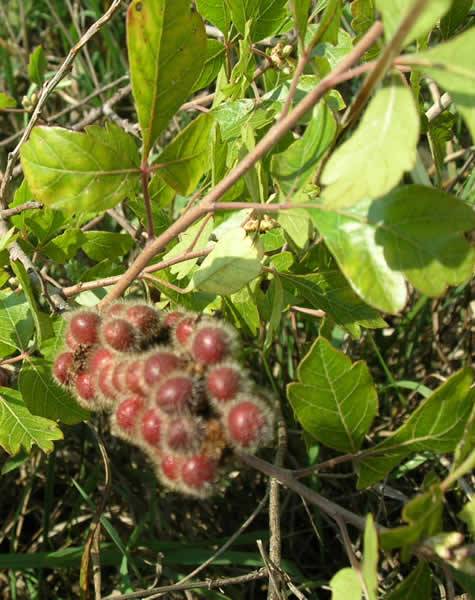
Common Name: Fragrant Sumac, Lemon Sumac, Polecat Bush
Full to part sun; moderately dry to dry moisture level; tolerates a wide range of soils including rock outcrops, infertile sands and gravels, and sandy or gravelly loams; slightly acid to slightly alkaline pH.
2-6 feet height by 6-10 feet spread; blooms in spring with the emerging leaves; female flowers are yellow and male flowers are brownish; fruits are small, dark red, hairy berries in summer.
Growth Rate: Slow to medium. Tends to sucker and roots along stems that touch the soil, forming dense stands.
Maintenance: Easy to grow. Occasional disease and insect problems.
Propagation: Seed germination codes B/C(60), H
Native Region: Middle and East Tennessee, lightly in West Tennessee uplands
Deciduous shrub that forms a dense, low-growing, rambling mound, which develops into a colony of tangled leaves and stems. Separate male flowers and female flowers appear on the same plant and also, more commonly, on different plants. Both leaves and twigs are aromatic. Leaves have a decidedly skunky smell when crushed, hence its common name. Leaves turn a bright scarlet, orange and purple in fall. Showy fruit. Occurs naturally on dunes, open dry woods, and banks. It is not poisonous and is a valuable shrub for bank stabilization. Can thrive on hot, very nutrient poor soils. High wildlife value. Birds love the fruit; also attracts bees and butterflies
